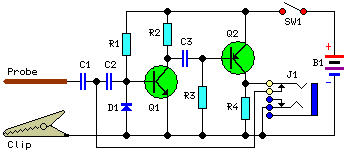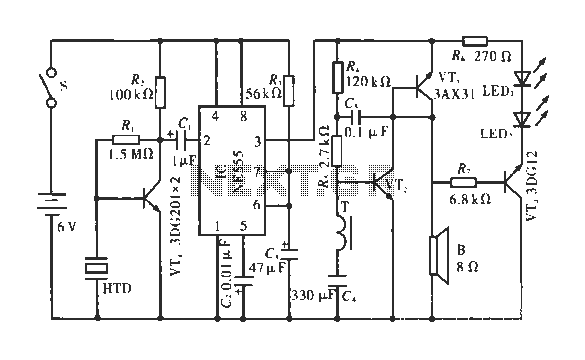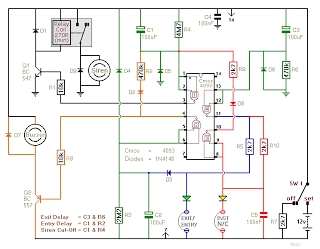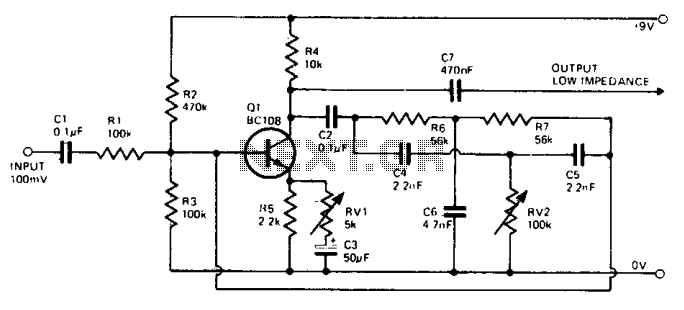
Over-Temperature Alarm Circuit Uses Common Inexpensive Components
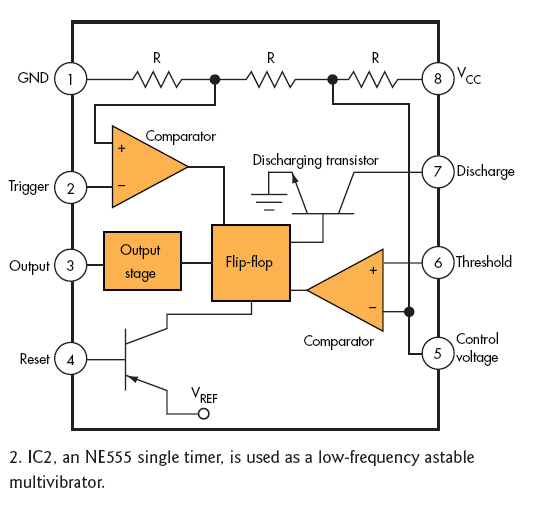
Over-Temperature Alarm Circuit Uses Common, Inexpensive Components | Negative-temperature-coefficient (NTC) thermistor, ICs.
The Over-Temperature Alarm Circuit is designed to detect excessive temperatures and provide an alert using readily available and cost-effective components. The core sensing element of this circuit is a Negative Temperature Coefficient (NTC) thermistor, which exhibits a decrease in resistance as the temperature increases. This property allows the thermistor to serve as an effective temperature sensor.
The circuit typically includes an operational amplifier (op-amp) configured as a comparator. The NTC thermistor is connected in a voltage divider configuration with a fixed resistor, creating a reference voltage that varies with the temperature. As the temperature rises and the thermistor's resistance drops, the voltage at the op-amp's non-inverting input increases. When this voltage exceeds the reference voltage at the inverting input, the op-amp output switches states, triggering an alarm signal.
Additional components may include a relay or transistor to drive an alarm or indicator LED, providing a visual or audible alert when the temperature surpasses a predetermined threshold. The design can be further enhanced with hysteresis to prevent rapid switching of the alarm during fluctuating temperatures, ensuring stability in the alarm state.
This circuit is suitable for various applications, including temperature monitoring in industrial equipment, home appliances, and HVAC systems, where maintaining safe operating temperatures is critical. Its simplicity and reliance on inexpensive components make it an attractive solution for temperature alarm systems.Over-Temperature Alarm Circuit Uses Common, Inexpensive Components | Negative-temperature-coefficient (NTC) thermistor, ICs. 🔗 External reference
The Over-Temperature Alarm Circuit is designed to detect excessive temperatures and provide an alert using readily available and cost-effective components. The core sensing element of this circuit is a Negative Temperature Coefficient (NTC) thermistor, which exhibits a decrease in resistance as the temperature increases. This property allows the thermistor to serve as an effective temperature sensor.
The circuit typically includes an operational amplifier (op-amp) configured as a comparator. The NTC thermistor is connected in a voltage divider configuration with a fixed resistor, creating a reference voltage that varies with the temperature. As the temperature rises and the thermistor's resistance drops, the voltage at the op-amp's non-inverting input increases. When this voltage exceeds the reference voltage at the inverting input, the op-amp output switches states, triggering an alarm signal.
Additional components may include a relay or transistor to drive an alarm or indicator LED, providing a visual or audible alert when the temperature surpasses a predetermined threshold. The design can be further enhanced with hysteresis to prevent rapid switching of the alarm during fluctuating temperatures, ensuring stability in the alarm state.
This circuit is suitable for various applications, including temperature monitoring in industrial equipment, home appliances, and HVAC systems, where maintaining safe operating temperatures is critical. Its simplicity and reliance on inexpensive components make it an attractive solution for temperature alarm systems.Over-Temperature Alarm Circuit Uses Common, Inexpensive Components | Negative-temperature-coefficient (NTC) thermistor, ICs. 🔗 External reference
Warning: include(partials/cookie-banner.php): Failed to open stream: Permission denied in /var/www/html/nextgr/view-circuit.php on line 713
Warning: include(): Failed opening 'partials/cookie-banner.php' for inclusion (include_path='.:/usr/share/php') in /var/www/html/nextgr/view-circuit.php on line 713
